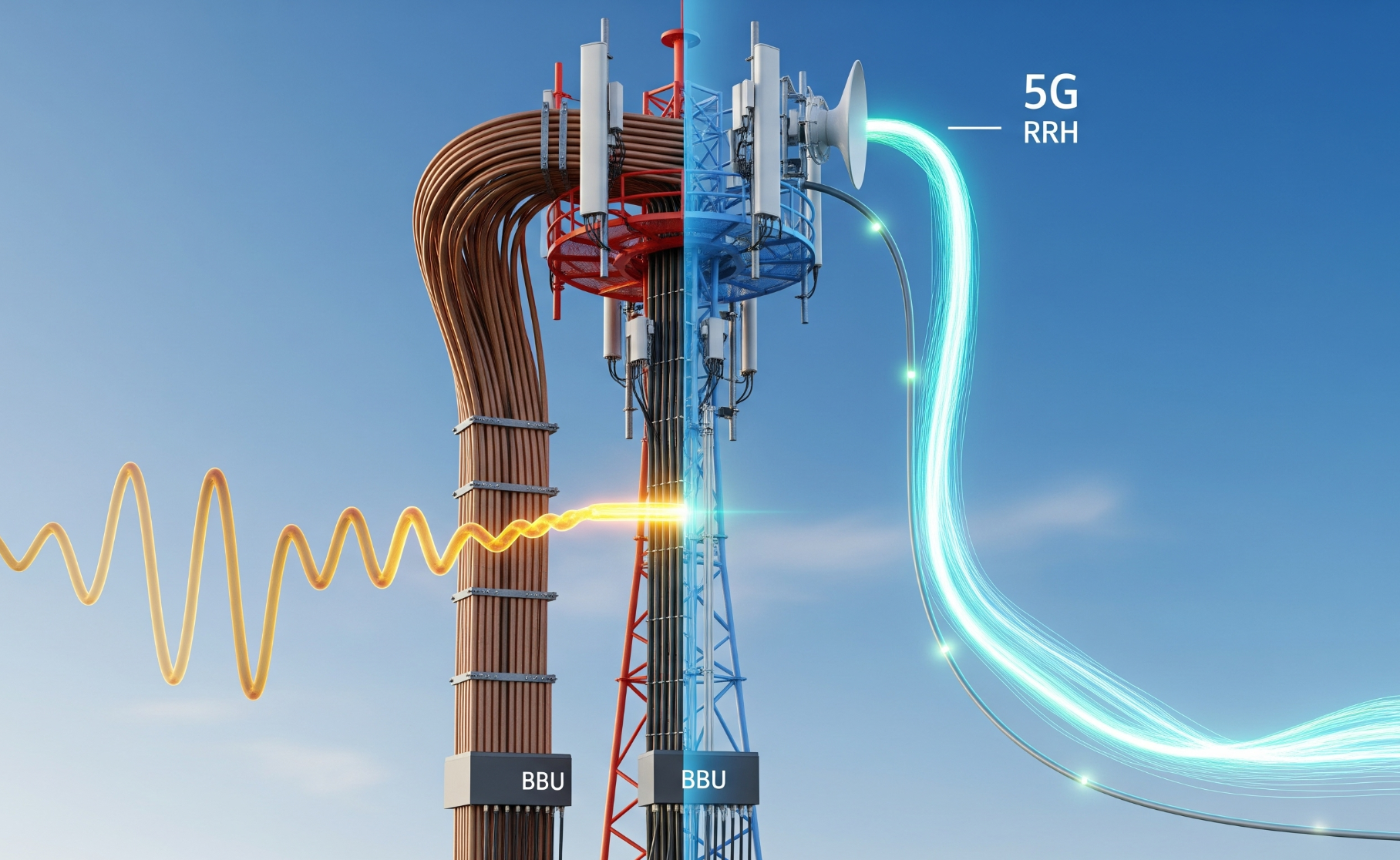
The Backbone of Next-Generation Wireless Networks
FTTA Connectivity
FTTA Connectivity (Fiber-to-the-Antenna) powers next-generation 5G networks with high-speed fiber optic links that replace outdated copper systems. It eliminates bottlenecks, minimizes latency, and ensures the speed and reliability needed for modern wireless performance.

What Is FTTA Connectivity?
FTTA (Fiber-to-the-Antenna) is a network design that uses fiber optic cables to create a direct, high-speed connection between the Baseband Unit (BBU) and the Remote Radio Head (RRH) at the antenna site. By replacing bulky copper coaxial cables with lightweight, high-capacity fiber, FTTA ensures faster data transmission and minimal signal loss. Many deployments use Plug-and-Play (PnP) fiber assemblies, allowing mobile network operators to accelerate 5G site installations and future upgrades.
Core FTTA Product Solutions
Hybrid Connectors
Single, ruggedized cable carrying both high-speed fiber and necessary power, simplifying installation and reducing tower load.
Top Jumper Connections
Short, pre-terminated assemblies for the critical, high- reliability link between the RRH and the antenna.
IP-Fan OutKits
Rugged, weather-sealed kits that efficiently break out multi- fiber cables into individual channels for RRU connectivity.
CTJ/Demarcation Boxes
Centralized, durable junction points used to manage and secure the transition of fiber and power at the cell site.
Passive Devices
Essential components (like Splitters 1xN) used in Outdoor DAS to distribute optical signals efficiently across network nodes.
Fiber Distribution Hubs (FDH)
Compact, weatherproof enclosures that organize, protect, and simplify fiber terminations and splicing for efficient field deployment and maintenance.

Key Benefits of FTTA Connectivity:
With FTTA fiber connectivity, network operators gain superior performance, reliability, and long-term savings — making it a future-proof investment in 5G infrastructure.
- Up to 10× Higher Capacity: Delivers data speeds of up to 100 Gbps.
- Ultra-Low Latency: Critical for real-time 5G, IoT, and edge applications.
- Long-Distance Performance: Transmits signals over 25 miles without degradation.
- Noise-Free Operation: 100% immune to electromagnetic interference (EMI).
- Lower Total Cost of Ownership (TCO): Reduced maintenance and longer service life.

Applications of FTTA Connectivity:
- 5G Network Deployment: Enables ultra-fast, high-frequency (mmWave) connectivity.
- Tower Modernization: Simplifies 4G/LTE-to-5G upgrades with all-fiber setups.
- Dense Urban Areas: Provides backhaul for DAS and small cell networks.
- Smart Infrastructure: Powers IoT devices, smart grids, and connected city systems.
- Industrial & Residential Solutions: Supports smart factories and Fixed Wireless Access (FWA) for homes.
“Built to monitor what matters — passively, precisely, always”